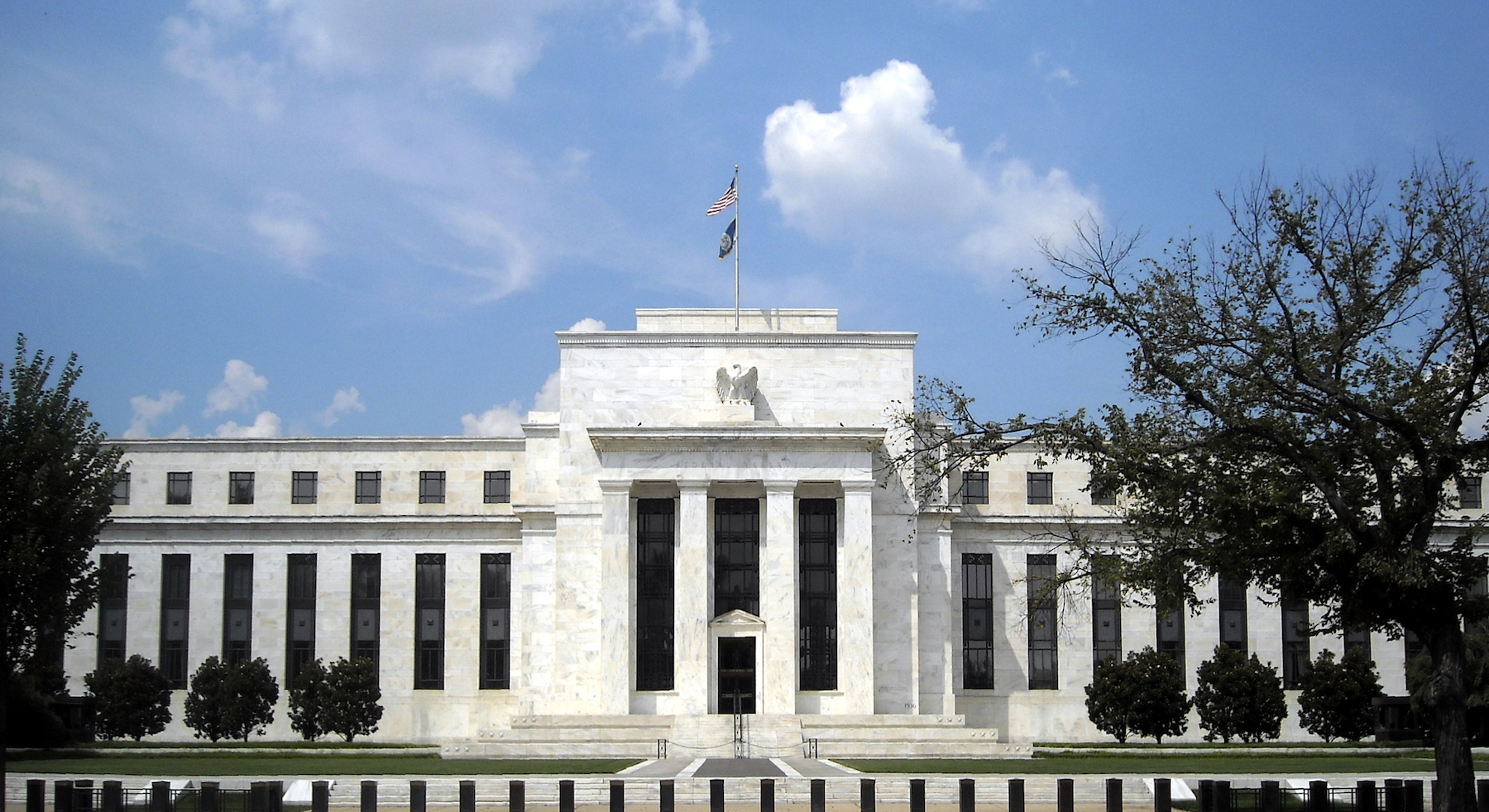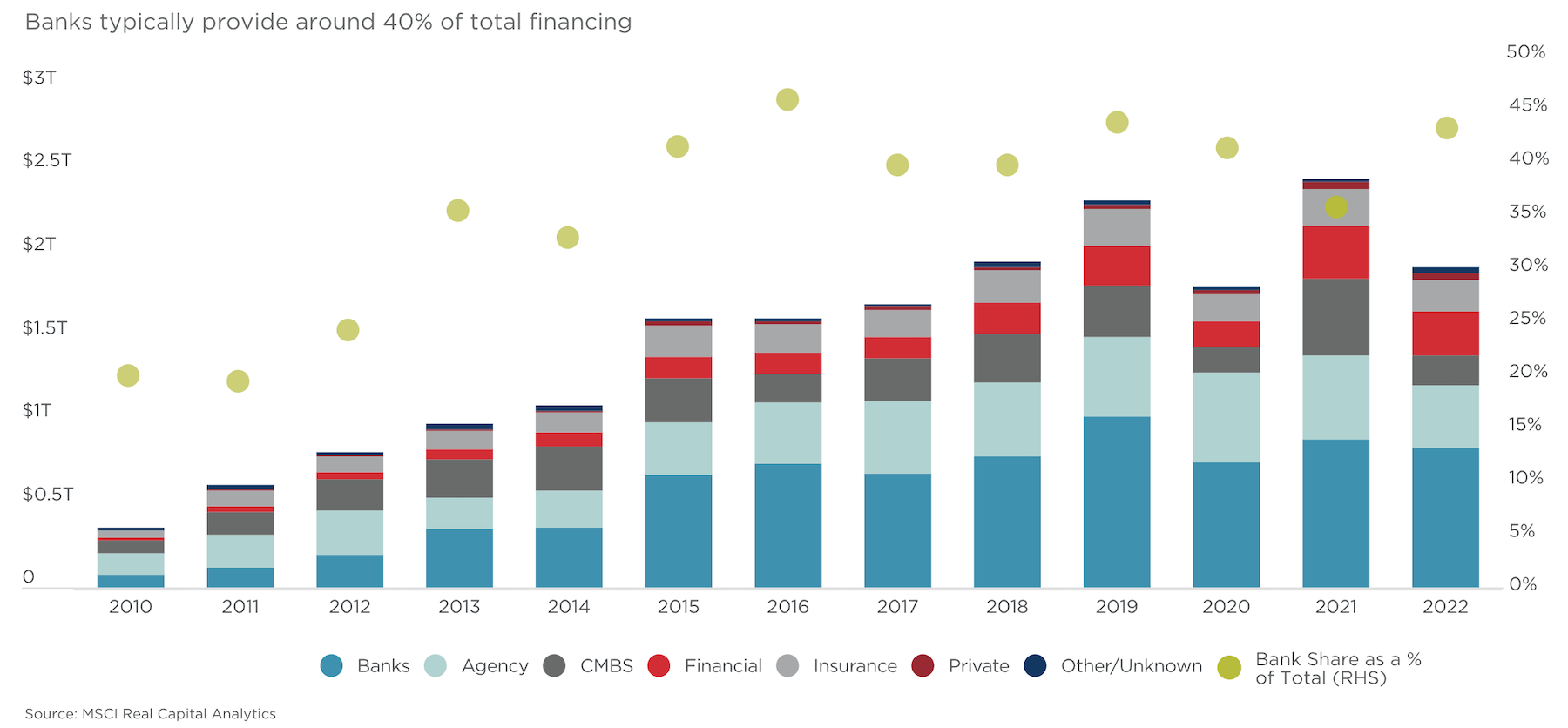The news this week that the regional First Republic Bank lost $102 billion in bank deposits in the first quarter of 2023—more than half of the $176 billion the bank was holding at the end of last year—was further evidence that investors and depositors are more than a little jittery about the financial condition of the banking industry.
While First Republic stated that its deposit-and-withdrawal activities had stabilized in late March and mid April, the bank is also in the process of reducing its workforce by one quarter and slashing its executive compensation.
First Republic’s travails, coupled with the recent takeover of Silicon Valley Bank and Signature Bank by federal regulators, has industry observers wondering whether these bank failures are signs of something more ominous. This is particularly true among real estate developers that rely heavily on bank lenders to capitalize their purchases and projects.
To sort out the latest banking turmoil and where the Commercial Real Estate (CRE) sector fits in, Cushman & Wakefield on April 19 posted a list of 14 frequently asked questions and weighed in on each. The topics touched on:
•What happened?
•How is this different from other banking failures?
•Why is commercial real estate in the limelight?
•What key metrics bear watching?
“Don’t panic,” C&W advises. But developers should also be aware that recent banking failures have toughened the lending environment; the percentage of banks that say they have tightened their lending standards for CRE loans and other business loans is the highest it’s been in 13 years.
“There are reasons to be both optimistic and concerned,” says C&W. “The sky isn’t falling; at this stage, it’s more overcast than anything else.”
This doesn't look like mid-2000s déjà vu
Of all the sources the CRE sector turns to for money, banks provide between 40 and 45 percent of the sector’s financing. Community and regional banks “are the lifeblood of the CRE lending landscape,” says Cushman & Wakefield. And smaller banks are responsible for the majority of multifamily, nonfarm residential, and acquisition/development/construction loan lending.
The failures of a handful of banks, out of a total of more than 5,000, don’t qualify as a crisis. And the banks that have failed in recent months had idiosyncratic factors that contributed to their unraveling. For example, C&W observes that, in the failures of Signature Bank and Silvergate Bank (the latter of which started liquidation proceedings in March), “underlying losses in the value of cryptocurrency served to act as a deposit outflow prior to outright withdrawals happening.”
C&W states that while no bank can survive a run on its deposits, and that a few more failures wouldn’t be a surprise, the U.S. banking system as a whole remains “well capitalized,” with most bank deposits spread across an array of sectors and individuals. The key in the future, C&W says, will be sustaining confidence in the solvency of that system.

It's worth noting that lenders had been pulling back on their CRE lending since last summer, homing in on high-quality assets like industrial and multifamily. C&W is keeping an eye on how the debt market perceives risk for CRE borrowers. On a broader scale, C&W is watching deposit flows, lending patterns to see how banks are navigating incoming maturities, liquidity based on the Federal Reserve’s provision of credit to banks, and jobless claims and inflation, which could be signs of recession.
Recent banking failures haven’t altered Cushman & Wakefield’s prediction of a mild recession in 2023 that will abate as tighter credit and slower economic growth stem inflation.
What C&W doesn’t predict is a repeat of the Great Financial Crisis of the mid-2000s. The financial system is “much stronger” now, and policymakers are responding to problems much quicker and aggressively. The size of the banking failures (so far, at least) is much smaller, and those failures relate not so much to credit but to the ramifications of a rising-rate environment and its impact on bond and securities values.
Most development is an attractive risk
Any weaknesses in the CRE sector will pose challenges to lenders. C&W doesn’t expect those weaknesses to pose a systemic banking sector failure. But, it cautions, there could be isolated instances of loan or credit stress for the banking sector, stemming from any combination of factors that might include oncoming loan maturity, a diminishing of underlying asset value, or deteriorating cash flows.
What does this mean for companies that are leasing space? C&W predicts that most property types will shift toward a tenant-friendlier environment. But landlords will also favor higher-quality tenants “to ensure the viability of the lease agreement.” For companies leasing space in ongoing construction, “the good news is that most development is considered to be attractive on a risk-adjusted basis.” So even if banks pull back, other lending groups are likely to step into that breech.
For signposts about what might happen next, C&W recommends following commercial mortgage-backed securities loan performance data across the CRE industry, and measuring that data against CRE debt financing. It might also be insightful to track prevailing underwriting standards and banks’ forward-looking expectations for the credit market.
What C&W doesn’t recommend is overreacting to the recent failure of Credit Suisse, and its takeover by rival UBS, as indicators of a European domino effect to what’s happening in the U.S.
Related Stories
Multifamily Housing | Jan 24, 2023
Top 10 cities for downtown living in 2023
Based on cost of living, apartment options, entertainment, safety, and other desirable urban features, StorageCafe finds the top 10 cities for downtown living in 2023.
Industry Research | Dec 28, 2022
Following a strong year, design and construction firms view 2023 cautiously
The economy and inflation are the biggest concerns for U.S. architecture, construction, and engineering firms in 2023, according to a recent survey of AEC professionals by the editors of Building Design+Construction.
Self-Storage Facilities | Dec 16, 2022
Self-storage development booms in high multifamily construction areas
A 2022 RentCafe analysis finds that self-storage units swelled in conjunction with metros’ growth in apartment complexes.
Industry Research | Dec 15, 2022
4 ways buyer expectations have changed the AEC industry
The Hinge Research Institute has released its 4th edition of Inside the Buyer’s Brain: AEC Industry—detailing the perspectives of almost 300 buyers and more than 1,400 sellers of AEC services.
Multifamily Housing | Dec 13, 2022
Top 106 multifamily housing kitchen and bath amenities – get the full report (FREE!)
Multifamily Design+Construction's inaugural “Kitchen+Bath Survey” of multifamily developers, architects, contractors, and others made it clear that supply chain problems are impacting multifamily housing projects.
Market Data | Dec 13, 2022
Contractors' backlog of work reaches three-year high
U.S. construction firms have, on average, 9.2 months of work in the pipeline, according to ABC's latest Construction Backlog Indicator.
Contractors | Dec 6, 2022
Slow payments cost the construction industry $208 billion in 2022
The cost of floating payments for wages and invoices represents $208 billion in excess cost to the construction industry, a 53% increase from 2021, according to a survey by Rabbet, a provider of construction finance software.
Mass Timber | Dec 1, 2022
Cross laminated timber market forecast to more than triple by end of decade
Cross laminated timber (CLT) is gaining acceptance as an eco-friendly building material, a trend that will propel its growth through the end of the 2020s. The CLT market is projected to more than triple from $1.11 billion in 2021 to $3.72 billion by 2030, according to a report from Polaris Market Research.
Contractors | Nov 30, 2022
Construction industry’s death rate hasn’t improved in 10 years
Fatal accidents in the construction industry have not improved over the past decade, “raising important questions about the effectiveness of OSHA and what it would take to save more lives,” according to an analysis by Construction Dive.
K-12 Schools | Nov 30, 2022
School districts are prioritizing federal funds for air filtration, HVAC upgrades
U.S. school districts are widely planning to use funds from last year’s American Rescue Plan (ARP) to upgrade or improve air filtration and heating/cooling systems, according to a report from the Center for Green Schools at the U.S. Green Building Council. The report, “School Facilities Funding in the Pandemic,” says air filtration and HVAC upgrades are the top facility improvement choice for the 5,004 school districts included in the analysis.

















